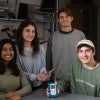
A new medical device developed by Rice University students will help premature babies in developing countries receive life-saving oxygen without damaging their eyesight.

A new medical device developed by Rice University students will help premature babies in developing countries receive life-saving oxygen without damaging their eyesight.

Reginald DesRoches, Lydia Kavraki elected to American Academy of Arts and Sciences
Rice University President Reginald DesRoches and Professor Lydia Kavraki have been elected to the American Academy of Arts and Sciences, the nation’s foremost society of scholars.

32 Rice students, alums win NSF Graduate Research Fellowships
The National Science Foundation has awarded Graduate Research Fellowships to 32 current, incoming and former Rice students, and selected another six for honorable mention.
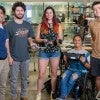
Sensor system could decrease fall risk for older adults
A team of Rice University engineering students designed a fall-risk assessment system that enables doctors to create personalized risk-management strategies for patients based on their individual movement patterns at home.
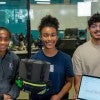
Rice U. engineering students’ brace puts patients first
For those suffering from rib flaring associated with congenital deformations of the chest wall that cause it to jut out or cave in, a team of Rice University engineering students has come up with a potential solution.
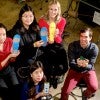
Rice U. students engineer socks for on-the-go neuropathy treatment
A wearable electrical-stimulation and vibration-therapy system designed by Rice University engineering students might be just what the doctor ordered for people experiencing foot pain and balance loss due to diabetic neuropathy.
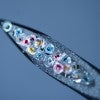
A 21st-century remedy for missed meds
Rice lab’s next-level encapsulation technology for drugs and vaccines could solve a $100 billion problem.

Higgs, Ramos elected AIMBE Fellows
Engineering’s Fred Higgs and Renata Ramos have been elected fellows of the American Institute for Medical and Biological Engineering.

James Chappell wins NSF CAREER Award
Rice bioscientist James Chappell has won a National Science Foundation CAREER Award to develop RNA programming methods that can improve human health and the environment.
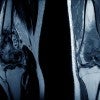
Upgraded tumor model optimizes search for cancer therapies
Rice U. bioengineers have developed an upgraded tumor model that houses bone cancer cells beside immune cells inside a 3D structure engineered to mimic bone and, through research using the model, found that the body’s immune response can make tumor cells more resistant to chemotherapy.

Fats help tag medical implants as friend or foe
Rice University bioengineer Omid Veiseh and collaborators found that lipid deposition on the surfaces of medical implants can play a mediating role between the body and implants, knowledge that could help scientists develop biomaterials or coatings for implants that could reduce malfunction rates.

Rice joins neutrino megaproject. Engineering launches energy transition initiative. McHugh lands cancer research grant. Keck Foundation funds quantum research. West named Cottrell Scholar.
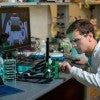
Bite this! Mosquito feeding chamber uses fake skin, real blood
Rice bioengineers teamed up with tropical medicine experts from Tulane to invent a high-tech way to study the feeding behavior of mosquitoes. To eliminate the need for live volunteers, the system uses patches of "synthetic skin" made with a 3D bioprinter.
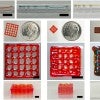
Peptide 3D-printing inks could advance regenerative medicine
How do you build complex structures for housing cells using a material as soft as Jell-O? Rice University researchers have the answer with a new 3D-printing ink.
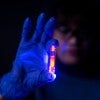
Rice scientists’ discovery could lead to new Alzheimer’s therapies
A new approach to the study of amyloid-beta, a peptide associated with Alzheimer’s disease, has led Rice University scientists to findings that could have a significant impact on the understanding and potential treatment of the disease.